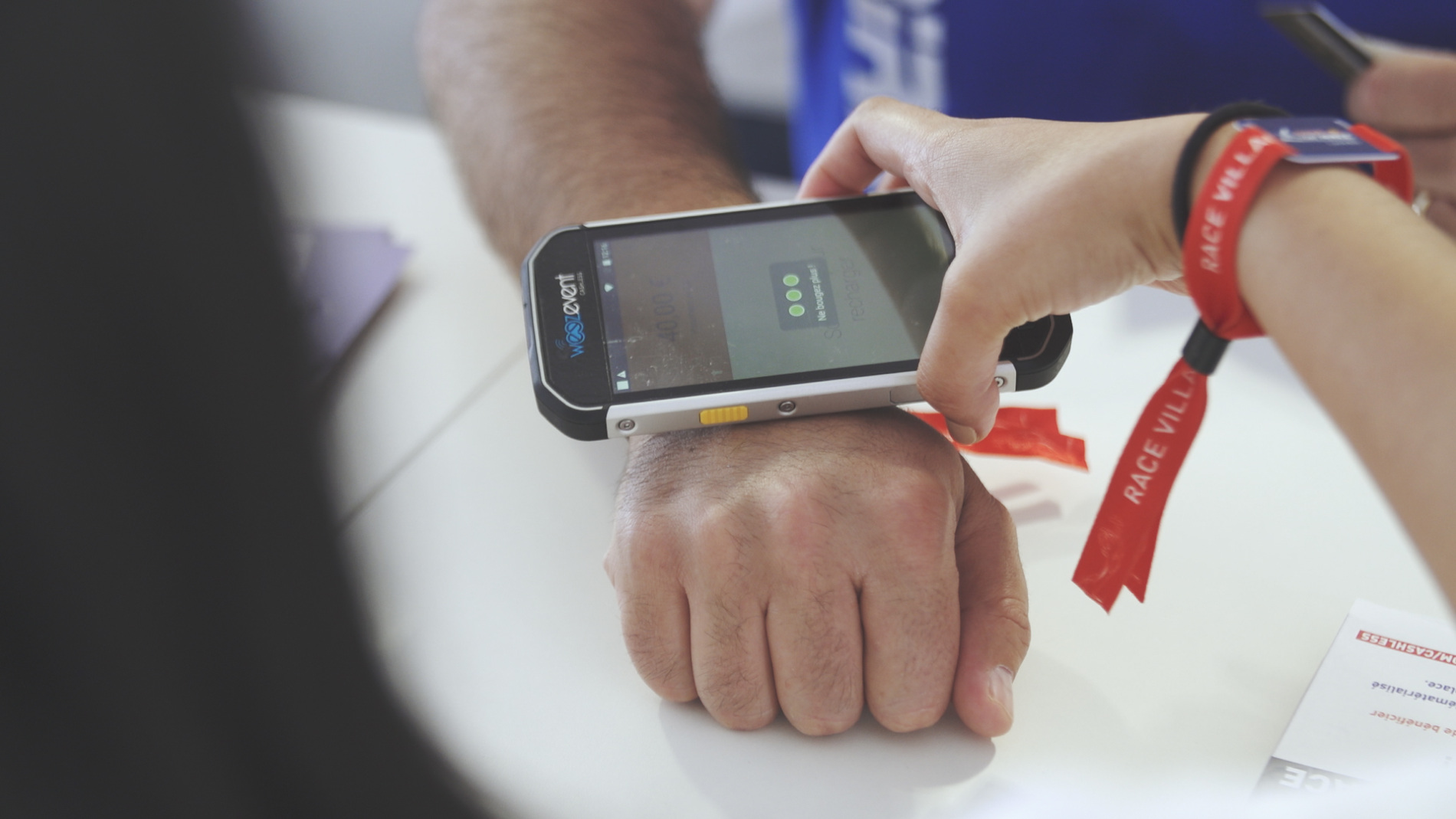Much more than a payment solution for your attendees, we have already presented what kind of management tool cashless systems can be for an event planner. Payment is but a small part of the possible uses that “cashless” enables. Its main interest lays in building a complete eco-system. Integrating cashless to your event required involvement of your entire organisation. Discover new areas to develop:
Control your access with NFC
Quite naturally, access control becomes the main development area of the NFC (Near Field Communication) device after payment. Access control via NFC provides visibility in real time over access flow and filling of the event. A tool highly appreciated by police and government authorities. For instance, it is now possible to count entries and exits of 3-day passes at festivals, even to restrict them.
Another major asset – NFC control significantly decreases the risk of wristband theft, considering that each wristband must be paired with a valid ticket to work. In 2017, thanks to this anti-fraud system, a wristband reselling organisation for a national festival was identified.
But the main advantage is to set it up to control backstage access. Often a conundrum, backstage access at events are generally regulated by different badges, stickers, armbands, fabric wristbands, tyvek wristbands, etc. It is not uncommon to encounter security teams that are confused by this multiplicity of access titles…Furthermore, their design and preparation often requires significant logistics: printing thousands of badges, briefing agents door to door, etc. NFC makes it all significantly easier. Each staff member is handed an NFC wristband containing data to the areas they are authorised to access.
This system has many benefits:
- Same wristband for everyone
- Quick upgrade of access rights
- Remote update of access rights
- No briefing necessary for security (the device makes the decision)
- Accurate stats on the number of entries through each door
Manage your audiences
At an event, there are several kinds of audiences: the general public, VIPs and staff. Interestingly, the segments that are hardest to manage are the smallest ones, i.e. VIPs and staff. Indeed, they often have special access, specific food from catering, freebies for drinks or merchandising or even specific discounts; and their expectations are even higher. Before the introduction of NFC, these benefits were managed with paper tickets or lists.
NFC means a consistent and convenient management of these benefits. These segments of the audience can therefore have access to catering, freebies and potential discounts on one wristband. This system decreases collection mistakes due to miscommunication. Indeed, when freebies are managed with paper tickets, bartenders and food truck staff are sometimes confused. With NFC, the terminal does all the work. The same applies to catering, mistakes and risks of “fraud” are significantly reduced.
Sponsor awareness
Introduction of an NFC device opens new possibilities in terms of brand awareness, and expands the type of offers you can make to sponsors. The NFC wristband becomes a sort of universal passport to live rich experiences with the event’s sponsors.
This is a way for event managers to make the use of NFC devices mandatory for brands wishing to interact with the audience to offer a consistent experience. Thanks to this, the event planner manages the use of the audience’s data so as to protect it and better inform them. This is also a way to monetise the NFC device by asking brands to pay an access right to that data and its system. For sponsors, this is also a sure way to multiply contacts and to access reliable data.
We have identified three types of brand awareness:
- Online awareness: The cashless system can include spotlights on the sponsors. It is possible to add steps in the registration funnel to offer discounts on some items or offer the chance to win prizes. For instance, it is possible to offer a discount to buy a soda for £1 directly from the online interface. This ensures high visibility for the sponsor.
- On-site awareness: More traditional, these awareness campaigns need a bit more design work. Connected photo booth, social media check-in, lotteries, possible awareness campaigns on-site are numerous. The concept is simple, attendees swipe their wristband at the sponsor’s booth to receive their picture by e-mail or take part in a lottery draw. In exchange, they agree to share their contact information with the sponsor.
- Context awareness: Offering many more options, this last type of awareness is very interesting! It is possible to set up triggers – such as entrance scan, purchase of an item, a top-up – and manage specific actions: allocation of freebies, prizes to pick-up, sending a text message, sending an email, etc. For instance, an audience member enters the event site and gets their ticket scanned, they receive a text message inviting them to download the mobile app. Or otherwise, an attendee buys 2 Heineken, he wins one.
Want to know more about Cashless? Download our free guide for event planners:


